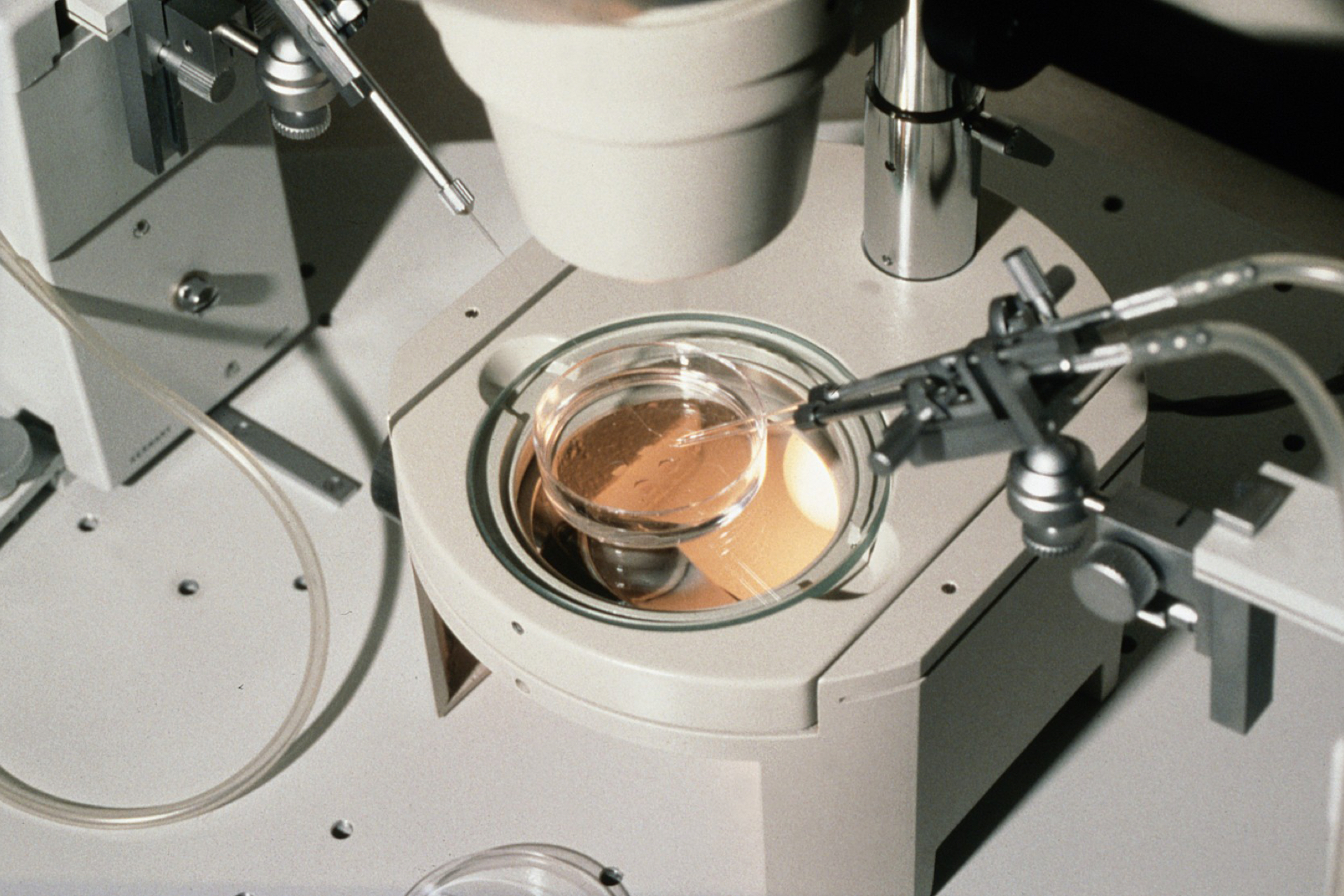This week, the US Congress is expected to hand President Bush a bill authorising federal funding for embryonic stem cell (ES cell) research on the half-million frozen IVF embryos stored in labs and clinics around the country. The president is expected to veto the bill, having expressed the view that a newly fertilised egg, which is what an IVF embryo is, enjoys the same moral status as a full-fledged human being. That won't be that, however. Given that the majority of Americans favour human ES cell research, the issue is sure to re-emerge until - in the next administration, perhaps - a funding bill passes.
But why are there a half-million frozen embryos in the United States? How has America managed to accumulate such a glut?
There are a variety of reasons for our embryo backlog. Chief among them is the fact that IVF patients - not clinics, not the government - are charged with deciding the fate of leftover embryos, and many find this unexpectedly hard. 'I think about it a million times over', I was told by one mother who had twin IVF daughters and six leftover embryos; she and her husband were paying some $1000 annually to keep their embryos frozen - a considerable incentive for letting them thaw, given that she could not bear more children. And yet: 'I can't seem to sign the papers', she said. 'I can't say: let's just throw them away. We worked so hard to get them, and I feel like they're part of us'. She wanted to do the right thing, but didn't know what that was. And she had gotten no help from her doctors. As a rule, clinics prefer to advance the idea of embryos as multi-celled clumps of tissue - forestalling pro-life interference or greater government involvement - but for patients, the reality is more complex.
In the US patients have five choices regarding excess embryos. They can use them; thaw them and permit them to lapse; donate them to another patient (conservatives like to call this 'embryo adoption', but technically it is a property transfer) or to research (not easy, given the federal funding moratorium and a dearth of labs that can receive them) or keep them frozen. Fascinatingly, social scientists have found that patients often start out with some notion of what they will do, but change their minds. Even in socially liberal San Francisco, Robert Nachtigall and colleagues found that patients have a hard time even knowing how to think about their embryos, variously conceptualizing them as 'biological tissue, living entities, 'virtual' children having interests that must be considered and protected, siblings of their living children, genetic or psychological 'insurance policies,' and symbolic reminders of their past infertility'. The average patient in that study had seven frozen embryos; the average embryo had been in storage for four years; 72 per cent of patients still did not know what to do with them.
And thinking of oneself as pro-choice or pro-life is not necessarily a useful predictor: 'I created these things, and I feel a sense of responsibility for them', I was told by one IVF mother, liberal and staunchly pro-choice, who could not rest until she located over the Internet two women willing to bring her excess embryos to term. Another took the opposite view: starting treatment, she and her husband assumed they would donate leftover embryos, but in the end, could not imagine their children's full siblings raised in a different household. A pro-life member of Congress, Dana Rohrabacher of California, decided after going through treatment with his wife that since embryos will not become babies unless they are transferred into a womb, they are not the moral equivalent of fetuses. He is still pro-life but in favor, now, of ES cell research.Given how difficult the matter is for patients, it's hardly a surprise that many flee. Often, what happens is that patients stop paying storage fees and disappear without leaving a forwarding address. 'I have tons of embryos, and I can't track down the patients', I was told by one Los Angeles doctor, Vicken Sahakian. Yet many doctors are afraid to destroy unclaimed embryos; their moral and legal status is too ambiguous. Sahakian fears he will never be able to sell his chic practice. 'The person buying it does not want to buy the embryos. So what do you do with them? I have embryos that have been here since 1992'.
The confusion persists at the federal level: while the president advances the idea that embryos are tantamount to babies (one conservative commentator likes to call them 'microscopic Americans') for purposes of donation, the US Food and Drug Administration considers them as tissue. But one thing is clear; clinics need to do a better job preparing patients for what may be the hardest decision they will make. When and if federal funding is granted, the research option may make the decision clearer. Such is the backlog, now, that a company called Reprotech has been created to take over clinics' inventory, track down patients, and talk through the options. Given this country's consumer approach to medicine that creates human life, it is perhaps fitting that the person helping patients find their way forward, morally, is not clergy, or a psychologist, often, but...a customer service representative. 'We end up being the counselors without the credentials', Russell Birnbaum, the Reprotech founder, told me, 'just answering the questions, being available'.
Liza Mundy is a staff writer for The Washington Post, and author of Everything Conceivable: How Assisted Reproduction is Changing Men, Women, and the World, published by Knopf in the U.S. and Penguin in the UK. Click here to visit the book's website.



Leave a Reply
You must be logged in to post a comment.